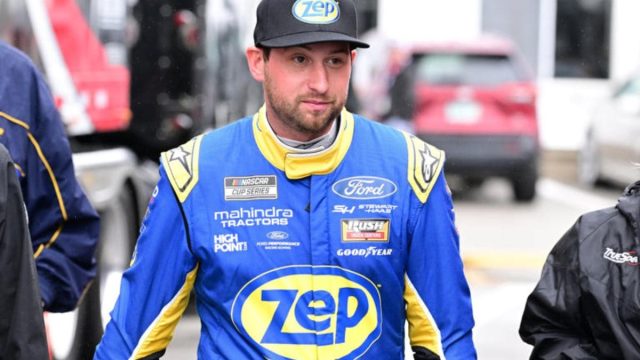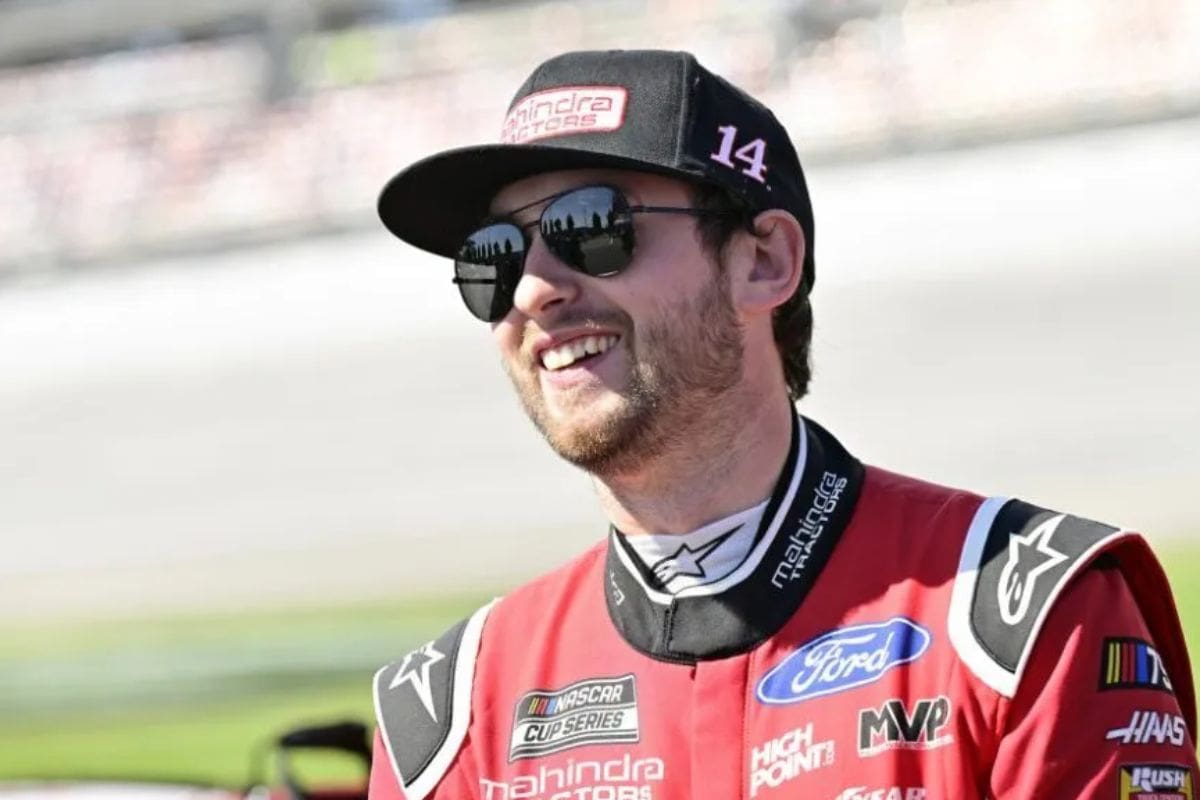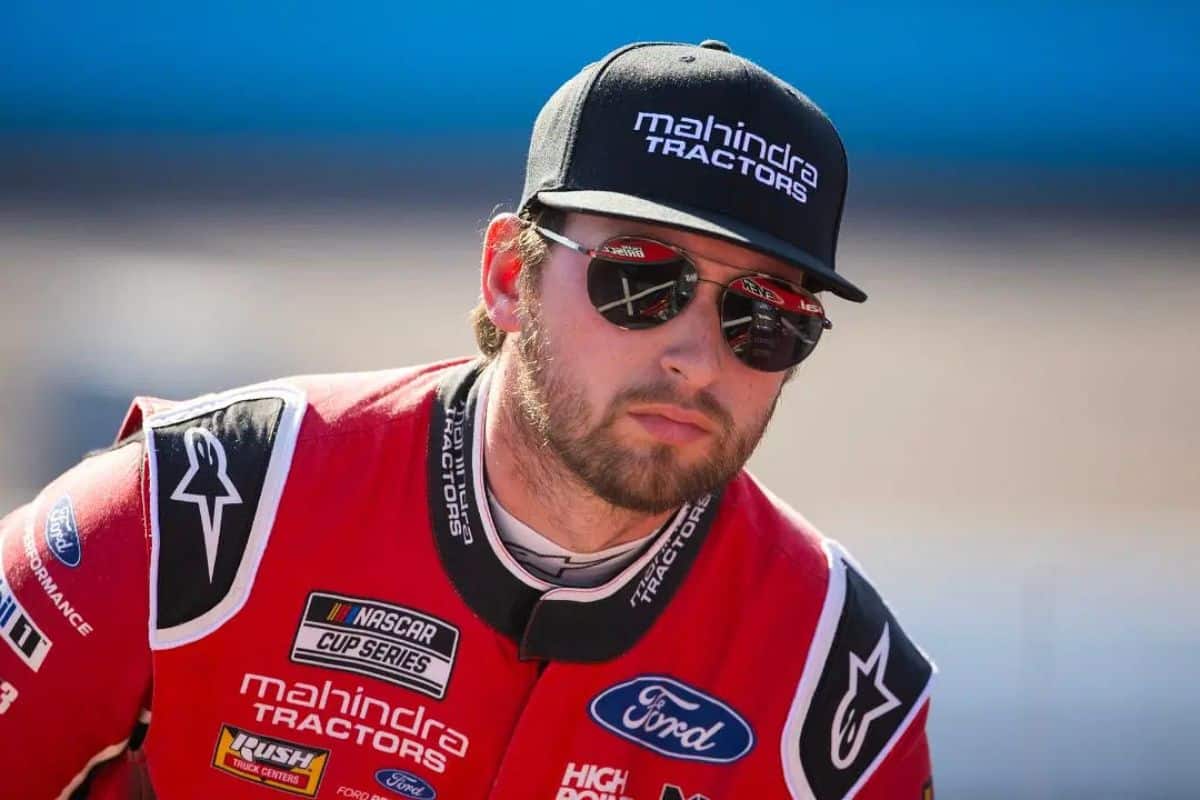Chase Briscoe Joins Joe Gibbs Racing: Chase Briscoe‘s recent move to Joe Gibbs Racing serves as a big charge of Ford’s current talent management and retention strategies within NASCAR. This change, unexpected and seemingly avoidable, casts a shadow over Ford’s ability to hold onto promising drivers, thereby questioning their strategic foresight. Briscoe’s departure depletes Ford’s talent pool and raises concerns about the automaker’s competitive edge. How did Ford‘s strategy falter so greatly, and what does this signal for the future of their NASCAR program? The implications of this move are profound and warrant a closer examination.
Key Highlights
- Chase Briscoe’s switch to JGR shows Ford’s failure in talent retention and management.
- Ford’s inability to secure Briscoe reflects deeper strategic missteps in driver negotiations.
- The move exposes Ford’s rigid and outdated talent management methods in a fast-evolving NASCAR landscape.
- Briscoe’s departure to JGR without sponsorship obligations highlights Ford’s flawed approach to driver support.
- This latest driver loss impacts Ford’s competitive stance and necessitates urgent strategic adjustments.
Tony Stewart’s Departure and Ford’s Situation
Tony Stewart’s departure from the Cup Series has left Ford grappling with the potential loss of four charters, exposing a significant vulnerability in their strategy. This development underscores a critical misstep by Ford, which not too long ago, had denied Stewart, also known as ‘Smoke,’ the opportunity to pursue Kyle Larson. The irony is palpable, as Ford now finds itself in an unenviable position that could have been mitigated with more strategic foresight.
The loss of Stewart-Haas Racing (SHR) drivers directly impacts Ford’s competitive edge and market presence in the Cup Series. The potential departure of these four charters signifies more than just a numerical reduction; it represents a loss of talent, resources, and brand prestige. For a manufacturer with a storied history in NASCAR, the implications are profound. It goes beyond the track, affecting sponsorship deals, fan loyalty, and the market strategy.
In the past, Ford played its cards with precision, securing top-tier talent and maintaining its position as a formidable force in the Cup Series. However, recent decisions have led to a starkly different outcome. Losing another ace to the competition is not merely a blow to their roster but a critical reflection on their current capability to retain and attract top talent.
This scenario reveals an underlying issue within Ford’s strategic framework—an inability to adapt to the fast-evolving dynamics of NASCAR. The departure of a key figure like Stewart serves as a wake-up call, urging Ford to reevaluate its approach to management, talent acquisition, and retention before further damage is done to their standing in the competitive landscape of the Cup Series.
Chase Briscoe’s Move to Joe Gibbs Racing
Chase Briscoe’s shift from Ford to Joe Gibbs Racing raises critical questions about Ford’s ability to retain top talent and maintain its competitive edge in NASCAR. This move underscores a worrying trend for the Blue Oval, which has seen a series of high-profile departures, culminating in Briscoe’s exit. The implications are significant, as Ford watches its championship hopes potentially evaporate with each lost driver.
“Ford cannot afford to lose any more talented racers, you know, they’ve lost Kevin Harvick, and Aric Almirola, to retirement last year obviously, and they’re losing Michael McDowell to Spire and Chevrolet.” – Eric Estepp
Joe Gibbs Racing (JGR) represents a powerhouse in the NASCAR world, consistently delivering competitive cars and clinching championships. Briscoe’s move to JGR is not merely a switch of teams; it symbolizes a shift in trust towards an organization that has mastered the art of winning. This change is telling of Ford’s current predicament—struggling to keep its drivers satisfied and competitive.
Ford’s recent performance metrics paint a stark picture. The manufacturer is grappling with a high rate of driver departures, a trend that has only intensified with Briscoe’s move. Conversely, JGR has maintained a robust driver retention rate, showcasing its ability to not only attract but also keep top-tier talent.
The decline in Ford’s championship wins further amplifies the issue. As JGR’s trophy cabinet continues to bulge, Ford’s remains relatively bare, raising the stakes for their internal strategy overhaul. In the high-stakes arena of NASCAR, retaining talent like Chase Briscoe isn’t just advantageous—it’s crucial. Ford’s failure to do so may mark the onset of a prolonged dry spell in their championship pursuits.
Media Storm and Unlikely Outcome
The media surrounding Briscoe’s unexpected switch to Joe Gibbs Racing underscores the shockwaves it has sent through the NASCAR community. When news broke that Briscoe would be leaving Stewart-Haas Racing to join the powerhouse lineup of Joe Gibbs Racing, it prompted a barrage of speculation and analysis from racing pundits and fans alike. The decision, coming off the back of an uncertain period in Briscoe’s career, has been widely regarded as a masterstroke for the driver but an unforeseen twist in the narrative of NASCAR team dynamics.
The move was not the most likely outcome, considering Briscoe’s deep roots with Ford and Stewart-Haas Racing. Many expected him to either stay with SHR or possibly transition to another Ford-affiliated team. Instead, aligning with Joe Gibbs Racing—a team synonymous with Toyota—has turned conventional wisdom on its head. This development not only highlights the unpredictable nature of professional racing but also underscores the strategic missteps by Ford in retaining key talent.
“Shoot, Riley Herbst has been linked to Toyota. Now Chase Briscoe, who has worn the Blue Oval logo on his firesuit for what, seven or eight years now, is leaving for Toyota. That’s a lot of talent walking out the door.” – Estepp
The media has been relentless in dissecting every facet of this switch. From analyzing Briscoe’s potential fit with JGR’s current lineup to speculating how this strategic shift might impact the competitive landscape, the coverage has been exhaustive. The consensus is clear: while Briscoe stands to benefit hugely from this move, it reflects poorly on Ford’s ability to secure and nurture its promising drivers.
Ford’s Position and Loss of Talent
Ford’s recent inability to retain Chase Briscoe underscores a glaring deficiency in their talent management strategy. The decision by Joe Gibbs Racing (JGR) to sign Briscoe without imposing sponsorship obligations reveals a sharp contrast to Ford’s approach, which evidently involved financial stipulations that may have been a deal-breaker. This misstep is indicative of deeper issues within Ford’s talent acquisition and retention framework, highlighting a critical need for reassessment.
The implications of losing a driver like Briscoe extend beyond immediate performance metrics. For Ford, it signals a troubling trend of failing to secure and nurture emerging talent. This is a multifaceted problem that can be broken down into several key areas:
- Negotiation Tactics: Ford’s insistence on sponsorship requirements contrasts starkly with JGR’s more flexible approach, suggesting a lack of adaptability in Ford’s negotiation strategies.
- Talent Evaluation: The decision to let a promising driver like Briscoe slip through their fingers raises questions about Ford’s criteria for evaluating and prioritizing talent.
- Team Dynamics: The potential fit for Briscoe within Wood Brothers Racing was evidently not compelling enough to retain him, pointing to possible issues in team culture or structure.
- Competitive Edge: In a highly competitive sport, Ford’s loss of a rising star to a rival underscores a significant setback in their quest for dominance.
Ford’s Remaining Talent and Potential Future Moves
Despite the loss of Chase Briscoe, Ford’s remaining talent pool and strategic moves could still offer a path to reclaiming their competitive edge. While with like Kevin Harvick, Aric Almirola, and Michael McDowell shows a concerning trend, Ford’s roster is not devoid of potential. Joey Logano and Ryan Blaney provide a solid foundation with their proven track records. Chris Buescher’s recent performances also indicate promise, but the task of filling the void left by departing talents remains urgent.
The potential pairing of Josh Berry and veteran crew chief Rodney Childers offers a glimmer of hope. Berry’s recent success, combined with Childers’ championship-winning expertise, could reinvigorate the Wood Brothers Racing team. This combination could serve as a catalyst for Ford, providing the stability and performance needed to counteract recent losses. Additionally, integrating this duo into the Ford ecosystem would bolster their immediate competitive stance but could also inspire confidence within the broader team structure.
“Josh Berry, Rodney Childers, and the Stewart-Haas Racing No. 4 team, like everyone else in the building, are now free agents but they really want to stay together, wherever they go next.” – Matt Weaver
However, the question remains whether this will be enough. The competitive landscape is shifting rapidly, with Toyota and Chevrolet making significant strides. Ford must adopt a more aggressive talent acquisition and retention strategy. This might involve scouting emerging talent earlier or providing more robust developmental support to existing drivers. Strengthening partnerships with key teams and enhancing technological investments could also prove beneficial.
News in Brief: Chase Briscoe’s JGR Move
The departure of Chase Briscoe to Joe Gibbs Racing underscores critical flaws in Ford’s talent management and retention strategies within NASCAR. This move, following the earlier exit of Tony Stewart, highlights the necessity for Ford to modernize and adapt its approach to securing top-tier drivers.
Without strategic changes, Ford risks further erosion of its competitive edge, as it continues to lose valuable talent to rival teams. Immediate and creative actions are imperative for Ford to remain a formidable force in NASCAR.
ALSO READ: Chase Briscoe Breaks Silence on Heavy Burden, Fans React



